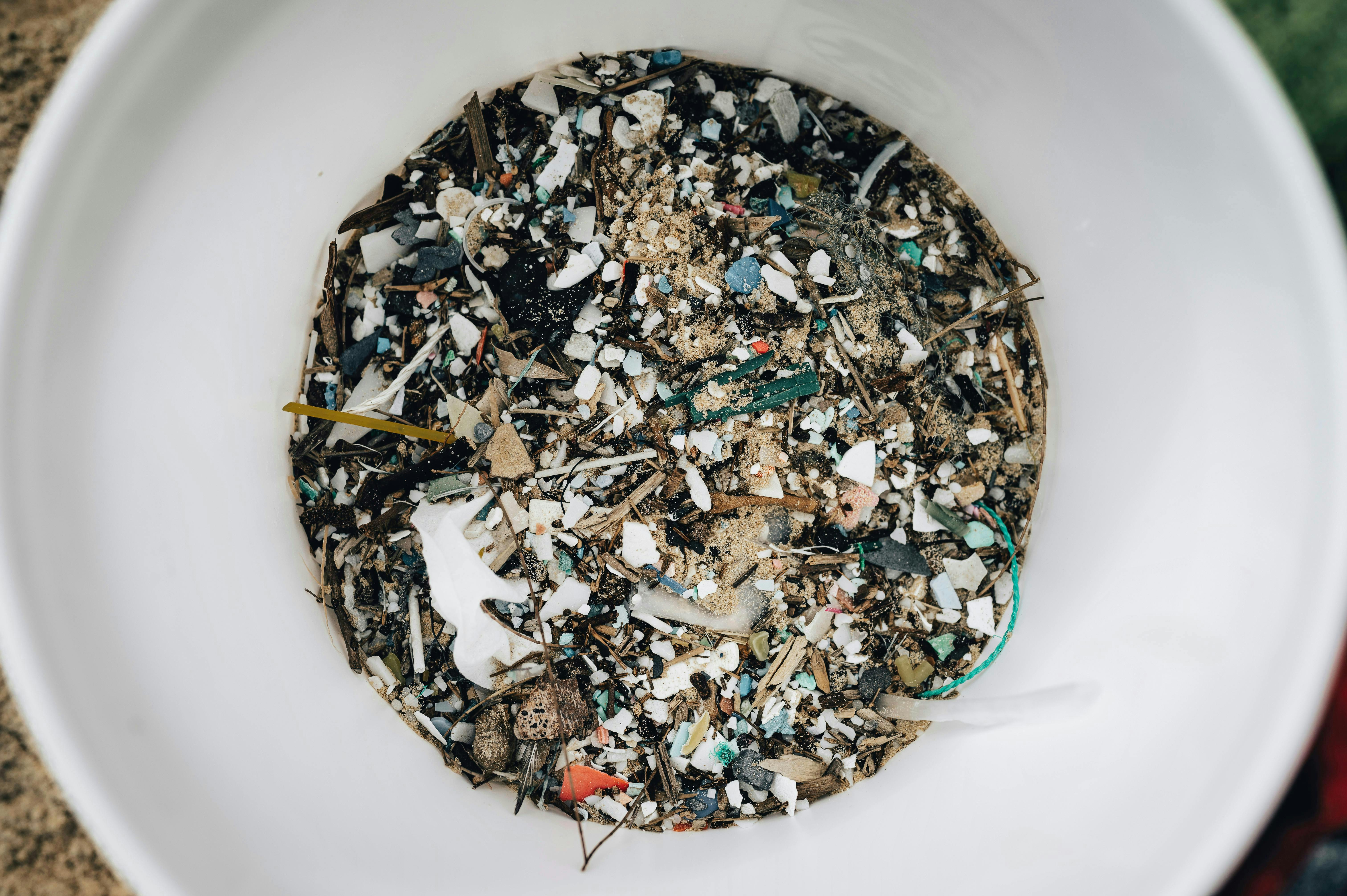When you go to the beach, there are certain things you expect to find in the water: seaweed, rocks, maybe a fish or two. Something you hope not to find in the water? Plastic.
But, the sad truth is that you’ve probably seen many plastic water bottles or plastic bags floating in your nearest river, lake, or ocean. Some types of plastic pollution are quite easy to recognize.
However, it’s also possible for plastic pollution to be present in a waterbody at a microscopic level.
These imperceptible instances of plastic pollution are called microplastics, and they can be so small that you can’t even see them. And yet, chances are, microplastics are present no matter where you’re swimming.
What are microplastics?
Microplastics are any small particles of plastic measuring 5 mm or less in diameter. They are a result from both commercial product development and the breakdown of larger plastics.
How do microplastics end up in the water?
One way that microplastics can enter bodies of water is through our drains.
Wastewater treatment plants are not designed to filter microplastics out of the water, and even with some filtration, the particles are often too small to be removed. Research has found that the typical treatment plant puts out about 4 million particles daily, and that the number can be as high as 65 million.
Microplastics can also be created when pieces of plastic are broken down by waves.
As you probably know, plastic is not known for its biodegradability. When plastic does degrade, it never fully decomposes, rather, it breaks down into smaller and smaller pieces, and leaches chemicals into our water.

What are the five types of microplastics?
Type of microplastic 1: Fibres
Microfibres are the most common type of microplastic. They come from things like cigarette butts or clothing made from synthetic materials, such as fleece. Microfibers can enter water through washing machines or littering.
Type of microplastic 2: Microbeads
Microbeads come from personal care products like cosmetics or cleansers. These go down our drains as we use them. Microbeads are so tiny they are not filtered out in water treatment plants, and can end up in lakes, rivers, and oceans.
Type of microplastic 3: Fragments
Fragments are small pieces of plastic that have broken off a larger piece. Single use plastic pollution is usually how these fragments enter our waters.
Type of microplastic 4: Nurdles
Nurdles are pellets that are melted down to produce plastic products. They can spill into waterbodies directly while being transported, or can be spilled on land and run into waterbodies later.
Type of microplastic 5: Foam
Foam often comes from the styrofoam in a coffee cup or other food container. Large chunks of styrofoam or entire styrofoam products break down, much like plastic, and enter our waters. But they never fully biodegrade.
Why are microplastics a problem?
Microplastics can be ingested by both animals and humans. These particles have been found in seafood like fish, shrimp, and mussels, and even in our drinking water.
Our waters will hold more plastic than fish by 2050, experts say.
Microplastics can harm marine life. When zooplankton consume microplastics, they eat less of the normal food from which they get their nutrition and energy. This causes them to have less energy for growth and reproduction.
For small invertebrates and filter feeders like mussels and oysters, consuming microplastics can cause issues with growth and reproductive issues.
When larger sea creatures consume microplastics, the particles usually pass through their bodies. However, in some cases, microplastics stay in the animal’s stomach for longer periods of time, causing abrasions and internal tissue damage.
What can you do to cut down on the microplastics in our waters?
- Reduce, reuse, and recycle–in that order.
- Not all plastic is recyclable, and reducing your plastic usage is the most important thing you can do.
- Pack plastic-free meals, especially when you’re eating by the water.
- Never litter, and pick up any litter that you see.
- Volunteer to clean up a shoreline.
- Don’t buy products with microbeads (they usually have “poly” on the label).
- Avoid buying clothing made from plastic-based fabric (spandex, lycra, etc.).
- Document pollution on social media. Add the date and time, and the hostages. #plasticpollution
- Report plastic pollution through the Swim Guide pollution reporting tool

